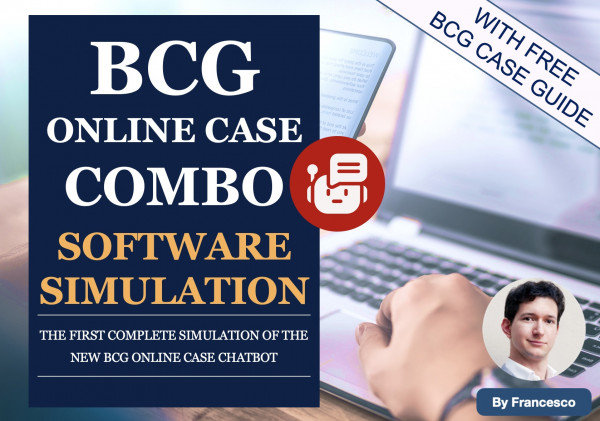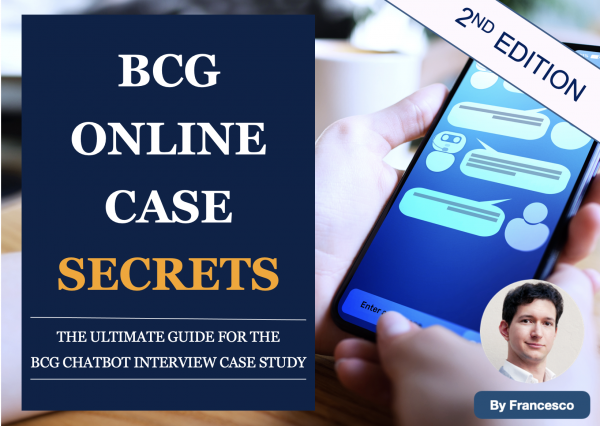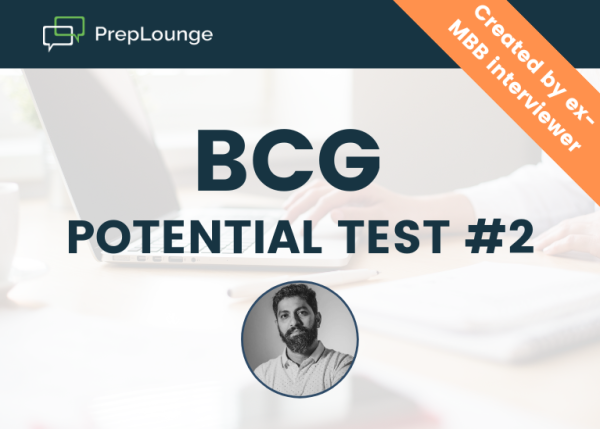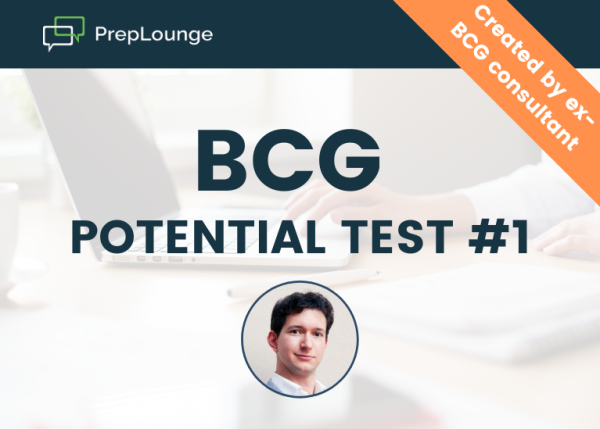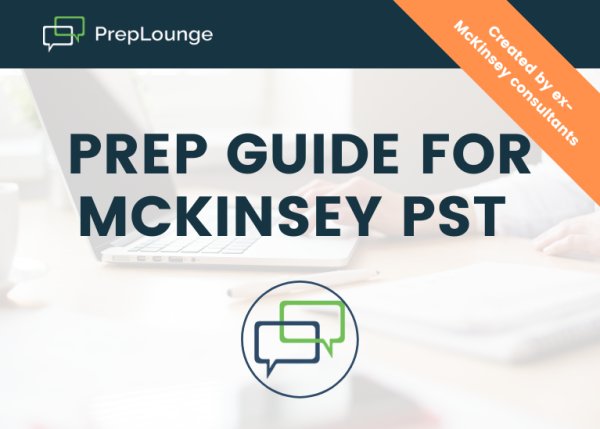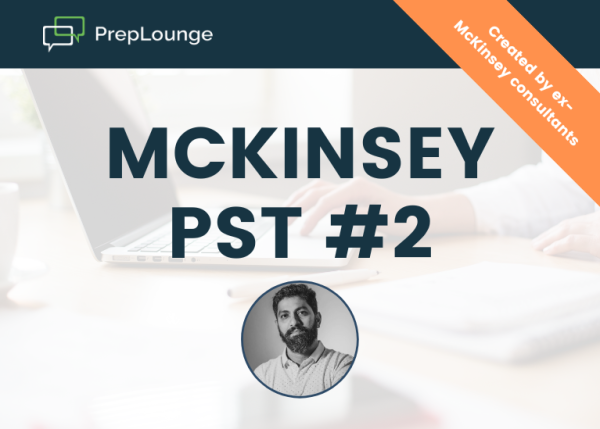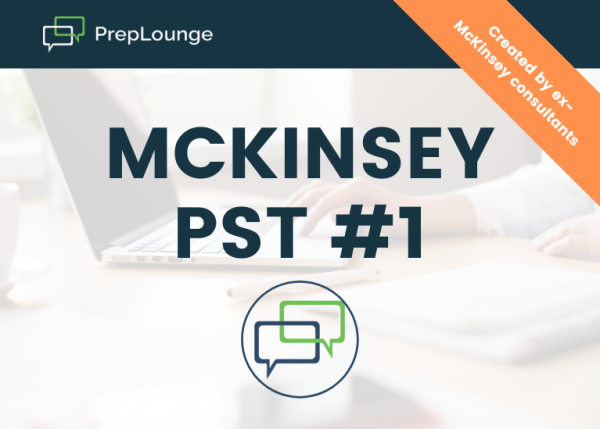Regarding Industry bucket, how would you use information related to customer segments? It comes to me as less intuitive than market size or growth. Could you give an example?
Get Active in Our Amazing Community of Over 452,000 Peers!
I need help structuring issue trees. Can someone give a concrete example of main buckets and bullet points for mkt entry
Overview of answers
Hi,
Always start with clarifying an objective:
- What are we going to achieve on the market and what is the timeline?
- What are our business model and revenue streams now in the current market
- Are we going to enter organically or non-organically?
Then I would use the following structure, but will modify it depending on the objective / context / industry:
Market
- Size
- Growth rates
- Profitability
- Segments and growth rates
- Distribution channels
- Bareers (regulation)
Competition
- Market shares of competitors and their segments (see the next point)
- Concentration / fragmentation (A fragmented market with lots of small players is less mature and easier to enter from a scratch. Concentrated market is hard to enter but has potential acquisition targets)
- Unit economics of the players (Margins, relative cost position)
- Key capabilities of the players (e.g. suppliers, assets, IP, etc)
- Previous / projected entrants
Company (If the case says you have the company that operates in a different / adjacent market)
- Your current capabilities (e.g. suppliers, assets, IP, etc)
- Capital availability
- Brand
- Previous experience in entering the markets
Entry strategy
- Are we achieving our objective?
- The need for investments
- Time to enter
- Branding (Do we keep an existing brand / do sub-brand if it is the new segment or create a new brand?)
- The existence of acquisition / licensing / JV targets if relevant
- Risks
Good luck!
Hi Alexandra,
this is how I would recommend structuring a market entry analysis:
1) GOAL CLARIFICATION. It is always good to start with the end in mind – thus what is the specific reason why you want to enter the market? Is it revenues, profits, specific synergies or something else?
2) INDUSTRY. There are three macro variables here.
- Barriers to entry. This includes regulation or technology requirements.
- Key industry players. This includes:
- Customers segments
- Competitors concentration
- Occasionally for some cases: suppliers (if they have market power) and substitutes (if competitors are weak)
- Key industry numbers. This includes for the relevant customer segments the analysis for the following elements:
- Growth of the market/segment
- Size of the market/segment
You should present this area connecting with the goal, and not purely listing the elements to analyze as if it was a laundry list. The best way to do so is explaining how a certain variable will help you to achieve your goal. Eg, if your goal is to increase revenues, don’t simply say “I want to look at growth, size”, rather “I want to look at growth and size – this will tell me if the market has the potential to provide enough revenues for our client.”
3) BEST WAY TO ENTER. Once you know the industry is attractive, you should consider the entry options.
- Which are the possible ways to enter the market? Usually you should consider (i) starting from scratch; (ii) M&A; (iii) Joint Venture or licensing
- Which option meets better our capabilities to enter the market? Each specific way to enter will require some different capabilities. If you start from scratch you may need skilled people in all the phases of the value chain; if you buy another company you may need fewer people, but more upfront capital, etc.
4) COMPANY - TARGET OBJECTIVE FEASIBILITY. Once you verified the industry is attractive and you have ways to enter, you can move to check the fit between the client and the selected industry.
- Are there positive or negative synergies the client can develop in that industry?
- Can our specific client reach its objective in the selected market (eg profits, revenues, market share, etc)?
In the second point, you will probably have to go through a profitability/revenue/cost framework, to calculate the effective result.
5) RISKS AND NEXT STEPS. What are the major elements that we should further analyze based on the previous points (eg regulator decision, opportunity cost of not entering in other markets, potential wrong pricing in the new market, etc)?
Hope this helps,
Francesco
Hi Serdar, knowing the customer segments helps to understand which is the real opportunity available in the industry. It is unlikely that what the client produces will fit the whole industry – most likely it aims to target a specific demographic/type of customer. The segmentation allows to understand which are the different types of customers present and therefore the real potential available in that market for the particular product or service of the client. Best, Francesco
Hi Alexandra!
I believe you are not thinking in the right way here. The way you think about strategic business decisions (such as whether to enter a market) is not by defining "buckets" to explore. So the following is very important to understand:
- Structuring a case does NOT mean to show the interviewer what you are going to look into!
- Structuring a case means to show the interviewer how you are going to answer the precise question asked by the client!
Hence, a structure to approach a case should first and foremost be rooted in the actual question that you need to address. From there, you should define the criterion to answer this question (precondition for this is to clarify the objective beforehand!), and build a corresponding value driver tree with branches and sub branches. All the elements that are usually refered to as "buckets" (market structure, market dynamics, customer preferences, target company operations/capabilities, etc.) should be mapped to the different sub branches of your value driver tree. This is true, regardless of whether you are looking at a market entry scenario, or an M&A case, or capacity expansion, or new product launch, etc. etc.
The crucial point is that, thereby, you create a rigorous thinking frame which organizes all relevant elements into a structure by which you can link the analysis of every element back to the core question you need to answer by means of logic.
Unfortunately, no case books are revealing this to candidates, creating the illusion to candidates that "learning frameworks" is an acceptable approach towards cases.
Cheers, Sidi
(edited)
Hi Sidi, Thank you for your response. I understand what you are saying but I would be verh greatful if you could give me an example of how to structure a case (ie in terms of what you present to the interviewer) since I feel like there are so many conflicting opinions here. Best, Alexandra
(edited)
.
(edited)
I'm afraid this can be hardly done in a comment. This is the core of what I teach my mentees in the course of the first two coaching sessions. It requires very careful explanation and illustration.







